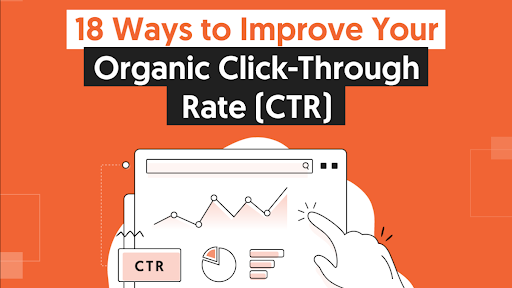Accomplishing Success With Targeted CTR Manipulation
The optimization of click-through prices (CTR) is a vital undertaking for brands intending to enhance their digital visibility and maximize interaction. Targeted CTR adjustment includes a variety of strategies, from data-driven advertisement positionings to the development of engaging web content tailored to details audiences.
Comprehending Click-Through Rates
Click-through prices (CTR) function as an important statistics in digital advertising, mirroring the performance of online material in driving individual involvement. This metric is calculated by splitting the variety of clicks a promotion or link receives by the overall variety of perceptions, expressed as a percentage (LinkDaddy CTR Manipulation). A greater CTR indicates that the web content reverberates well with the target audience, triggering them to take action
Comprehending CTR is essential for online marketers aiming to enhance their projects. Different aspects influence CTR, consisting of advertisement positioning, layout, and the importance of the web content to the target market's passions. For circumstances, engaging headings and visually attractive images can considerably improve the possibility of users clicking on a link.
In addition, the context in which the web content exists plays a crucial duty in determining CTR. Advertisements presented at calculated times or during appropriate occasions are more probable to record interest. By evaluating CTR data, marketing experts can recognize patterns and areas for renovation, permitting more targeted approaches. Eventually, a complete understanding of CTR equips online marketers to improve their techniques, guaranteeing that electronic campaigns attain their wanted end results effectively.
Importance of CTR Control
In the affordable landscape of digital marketing, the control of click-through prices (CTR) has become a vital method for improving campaign efficiency. CTR serves as an essential efficiency sign, reflecting the efficiency of on-line advertisements and content in bring in customer engagement. A higher CTR not only represents better interest but likewise can result in enhanced online search engine positions and reduced cost-per-click (CPC) prices, thus enhancing total marketing budgets.
The importance of CTR control depends on its capacity to educate online marketers about client preferences and habits. By examining CTR data, companies can determine which aspects of their campaigns resonate most with their target audience. This understanding allows for more enlightened decision-making and the allocation of sources to one of the most efficient channels.
Furthermore, effective CTR control cultivates an affordable benefit. Therefore, grasping CTR control is not merely advantageous; it is necessary for accomplishing sustained success in electronic advertising campaigns.
Methods for Targeted CTR
Achieving targeted click-through prices (CTR) requires a critical method that encompasses different techniques tailored to details audience sectors. One effective method is optimizing ad positionings by using information analytics to identify high-performing networks. By concentrating efforts on these networks, marketing experts can improve presence and increase interaction.
An additional important approach is crafting compelling headings and phones call to action (CTAs) A/B testing various variations can expose which mixes resonate most with the target audience, therefore driving higher CTR. Furthermore, including visual aspects such as attractive pictures or videos can significantly improve appeal, making material extra engaging and shareable.
Personalization additionally plays an important function; using customer information to develop customized content can foster a sense of significance, motivating clicks. Moreover, leveraging social evidence via endorsements and user-generated content can build count on, eventually improving CTR.
Analyzing Individual Habits
 Comprehending user habits is essential for enhancing marketing methods and boosting overall efficiency. By analyzing exactly how customers interact with material, online marketers can get valuable insights right into choices, motivations, and pain factors. This knowledge allows the growth of more targeted campaigns that resonate with details target market segments.
Comprehending user habits is essential for enhancing marketing methods and boosting overall efficiency. By analyzing exactly how customers interact with material, online marketers can get valuable insights right into choices, motivations, and pain factors. This knowledge allows the growth of more targeted campaigns that resonate with details target market segments.To efficiently examine customer behavior, various tools and methods can be used. Web analytics platforms offer information on customer involvement metrics such as click-through rates, bounce prices, and time spent on page. Heatmaps and session recordings enable online marketers to imagine customer interactions, exposing which aspects bring in focus and which might be overlooked.
Additionally, user feedback through surveys and feedback forms can provide qualitative insights, enhancing the understanding of user sentiment and complete satisfaction. Segmenting users based on passions, habits, and demographics can additionally fine-tune targeting efforts, tailoring content to meet varied demands.
Inevitably, constant analysis of user behavior is essential for adapting marketing strategies in real-time. As customer trends evolve, staying attuned to these modifications guarantees that campaigns remain reliable and pertinent, cultivating a much deeper link with the target audience. This fundamental understanding establishes the stage for the effective execution of targeted CTR adjustment methods.
Measuring Success and Adjusting Approaches
Determining success in targeted advertising and marketing campaigns requires a strategic strategy click to read that integrates efficiency metrics with recurring evaluation. Key performance indications (KPIs) such as click-through prices (CTR), conversion prices, and client acquisition expenses must be checked continuously to determine the effectiveness of adjustment techniques. By developing a baseline, marketers can examine changes in CTR and determine fads that indicate effective interaction or possible shortcomings.
Routinely assessing these metrics allows for the prompt change of strategies. For circumstances, if a certain campaign shows a substantial decrease in CTR, it might signal the requirement for imaginative revisions or a reevaluation of targeting criteria. Using A/B testing can even more fine-tune strategies by comparing variations of ads or landing web pages, giving understanding into what resonates finest with the target market.
Additionally, integrating qualitative responses via surveys or user meetings can supplement measurable data, providing a thorough view of audience perception. Ultimately, the capability to iteratively examine and fine-tune techniques based on real-time data promotes a click to find out more much more responsive advertising method, guaranteeing that campaigns remain aligned with business objectives and target market choices. This adaptive approach is vital in attaining continual success in targeted CTR control.
Conclusion
In verdict, targeted CTR control is crucial for enhancing digital advertising and marketing efforts - CTR Manipulation. Inevitably, successful CTR control not only boosts visibility yet additionally fosters trust fund and reliability, consequently contributing to sustained growth in affordable markets.
 Targeted CTR manipulation encompasses an array of approaches, from data-driven advertisement placements to the advancement of compelling web content customized to particular target markets.Click-through rates (CTR) offer as a vital metric in electronic advertising, showing the efficiency of online web content in driving individual involvement. A higher CTR suggests that the content resonates well with the target audience, motivating them to take activity.
Targeted CTR manipulation encompasses an array of approaches, from data-driven advertisement placements to the advancement of compelling web content customized to particular target markets.Click-through rates (CTR) offer as a vital metric in electronic advertising, showing the efficiency of online web content in driving individual involvement. A higher CTR suggests that the content resonates well with the target audience, motivating them to take activity.CTR offers as a key performance indication, showing the effectiveness of on-line advertisements and content in drawing in user interaction.In verdict, targeted CTR control is vital for optimizing this page digital advertising initiatives.